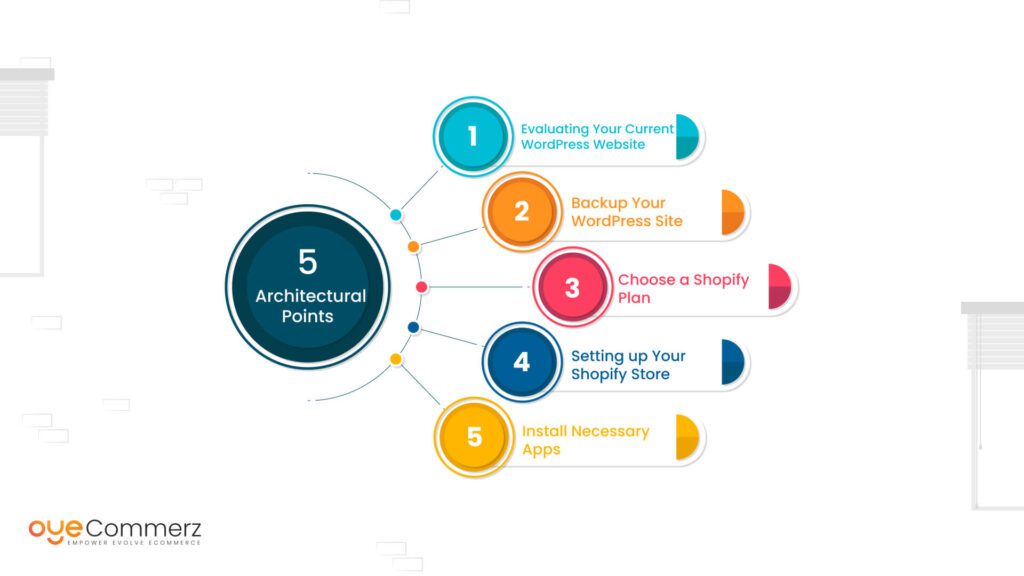Shifting from WP to Shopify marks an promising step in optimizing your e-commerce processes. As businesses expand, choosing a solution that aligns with growth potential, user experience, and customization is essential. Shopify is widely recognized as a favorite for online merchants, providing superior flexibility, security, and user-friendliness. In this guide, we will delve into why this migration is a game-changer, highlight the advantages, and provide practical tips to facilitate a smooth move.
1. Why Migrate from WordPress to Shopify?
WordPress, paired with WooCommerce, continues to support countless e-commerce platforms. However, as companies expand, challenges like plugin dependency, data risks, and technical complexities can hinder progress. Shopify, specifically created for e-commerce, addresses these issues with an all-in-one, user-friendly platform. Statistics back this transition—Shopify powers over 4.4 million stores worldwide, with a documented 10% increase in sales conversion rates for numerous merchants after migration.
2. Shopify's Perks for Thriving Online Stores
Shopify’s robust ecosystem is tailored for scaling brands. Its notable features are:
- Effortless Design Flexibility: Shopify provides over 80 professionally designed themes.
- Integrated Tools: Capabilities such as Shopify Payments and built-in SEO streamline operations.
- International Expansion: Multi-currency support and localization features empower businesses to reach global markets.
Additionally, Shopify boasts an uptime rate of 99.98%, guaranteeing your store is always operational.
3. Preparing for WP to Shopify Migration
Before migrating, assess your current store. Analyze inventory details, client information, and SEO performance. Resources such as Shopify’s Migration Kit or external tools can simplify this process. Develop a detailed strategy, ensuring all resources—item details, images, and articles—are optimized for transfer.
4. Data Migration: A Critical Step
Data migration forms the foundation for a smooth platform switch. When migrating from WordPress to Shopify, prioritize:
- Product Information: SKU, descriptions, and groupings.
- Client Information: Emails, order history, and preferences.
- SEO Optimization: Retain meta tags, URLs, and redirects to maintain search rankings.
Use apps like LitExtension to streamline data transfer while minimizing errors.
5. Customizing Your Shopify Store
After the move, customizing your Shopify store helps it reflects your brand. Take advantage of Shopify’s drag-and-drop editor to design pages effortlessly. Shopify's themes are mobile-responsive, providing a seamless user experience across platforms—a critical factor, given 74% of online shopping is generated by mobile users. Migrate from WordPress to Shopify
6. How to Protect Your SEO Rankings When Switching Platforms
Search engine optimization is crucial for preserving your online presence during migration. Shopify is highly optimized for search engines with organized link formatting, built-in optimization tools, and seamless blog integration. Ensure:
- Implement 301 redirects for old URLs.
- Enhance updated content with keyword-rich content.
- Use Shopify's Migrating eCommerce platforms apps Plug in SEO to track analytics after the switch.
7. Post-Migration Testing
Once the migration is complete, conduct thorough testing.
Check: - Website speed (Shopify delivers faster speeds compared to WordPress).
- Payment integration reliability and transaction flow.
- Adaptability across devices.
Quality assurance guarantees your store provides a seamless shopping experience from the start.
8. Real-Life Success Story
An example of effective platform switching is Gymshark, a fitness apparel brand that transitioned to Shopify. After the switch, the company experienced a 60% increase in mobile sales and significantly lowered site downtime. This highlights the capabilities of Shopify in enhancing online business success.
9. Overcoming Common Migration Issues
Migration comes with challenges, such as information accuracy and adjusting tailored features. However, Shopify’s extensive assistance and external professionals simplify the process. Partnering with qualified Shopify developers helps guarantee a smooth transition.
10. Making the Switch: The First Step Toward Success
Migrating from WP to Shopify marks a forward-thinking decision to e-commerce. By addressing scalability, simplifying management, and improving buyer satisfaction, Shopify empowers businesses to thrive in competitive markets.
Final Thoughts
Switching from WordPress to Shopify offers a smart solution that can significantly boost your online business performance. With a well-structured strategy, the right tools, and expert support, you can unlock new growth opportunities.
Ready to make the leap? Reach out today to learn how our Shopify migration services can revolutionize your online store. Get in touch today, or consider: Can your business afford to miss out on Shopify’s growth potential?
